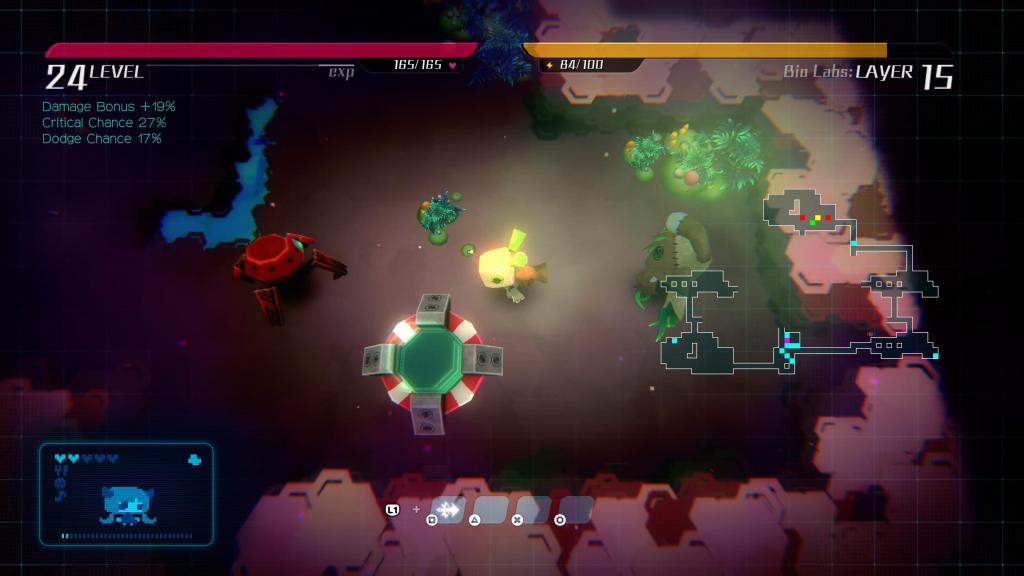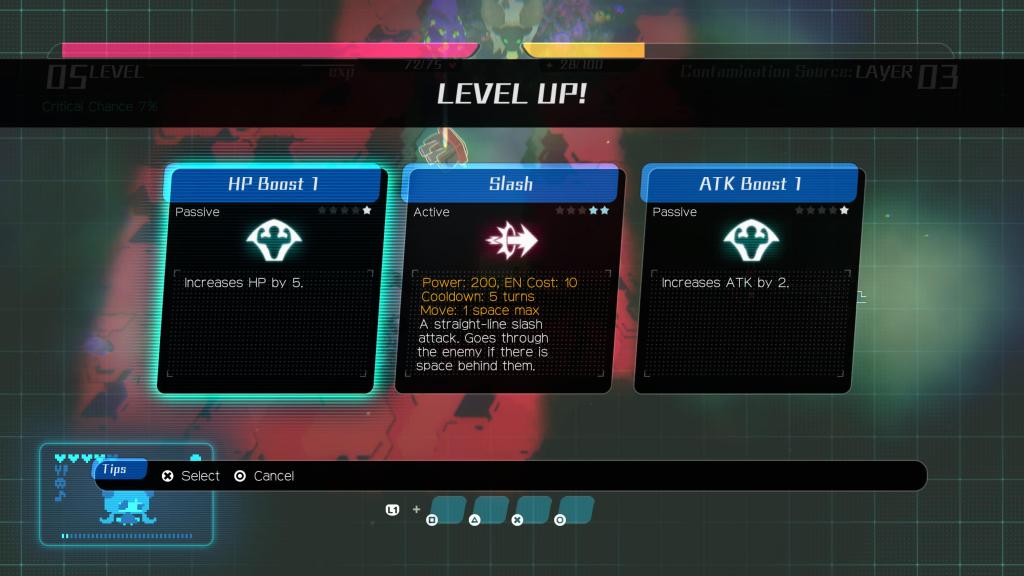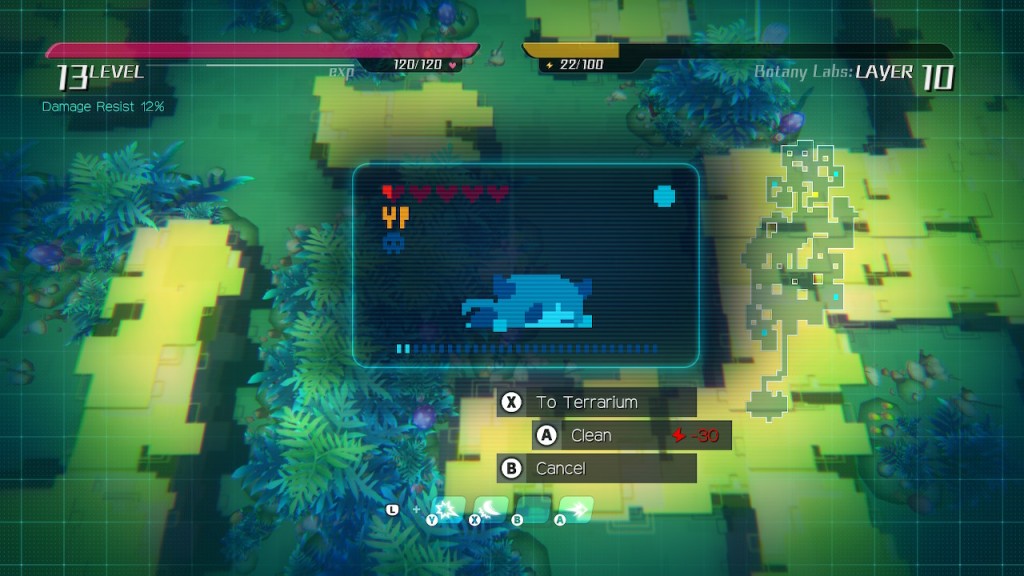“Mystery Dungeon” is a phrase that most gamers likely associate with the Pokemon series. These highly-emotive spinoffs are critically acclaimed by fans for their combination of entrancing narrative with randomised dungeon-crawling gameplay. Though the term has become synonymous with the Nintendo franchise since popular titles like Red/Blue Rescue Team and Explorers of Darkness/Time/Sky, its origins stem from a genre of games that predates Pokemon by several years.

Pioneered by Chunsoft, the series was conceptualised as a Dragon Quest IV spinoff known as Torneko’s Great Adventure: Mystery Dungeon, released in 1993 exclusive to the Super Famicom in Japan. Playing as the game’s money-hungry merchant, Torneko (known also as Taloon in Western releases), the player is tasked with exploring randomly-generated dungeons to find valuable items to expand your store and fend off monsters that might hinder your progress. A reliance on randomisation and challenging difficulty created a roguelike genre now widely recognised as the Mystery Dungeon.

Series like Final Fantasy, Etrian Odyssey, and most notably Pokemon joined in with popular Mystery Dungeon spin-offs. An original IP known as Shiren the Wanderer was even created from the ground up as a game focused entirely on this style on gameplay and now spans multiple entries from the Gameboy to the Nintendo Switch. Now almost 30 years since its inception, a new Mystery Dungeon title emerges, seeking to fill a void in the dormant subgenre: Void Terrarium.
Originally released on the PlayStation 4 and Nintendo Switch, this new title from NIS America (who somehow manage to pump out obscure JRPGs at an alarming rate!) has made its way onto PlayStation 5 in the upgraded ++ version. So is this roguelike worth your time, or should it be avoided at all costs? Read on and find out!
Story
Civilisation has collapsed. Humanity is on the brink of extinction. The world has fallen under the grasp of a highly-contagious toxic fungus that infects every living organism. In a desolate scrapyard nestled deep in the underground ruins, a lone robot awakens. Trudging through the barren wastes now long abandoned by humans, the robot stumbles across a dormant figure, a young girl asleep on a bed of fungi: Toriko.

In a comatose state with mushrooms protruding from her body, the robot focuses its entire efforts on revitalising the weakened girl and nursing her back to health. A goal that could possibly lead to the restoration of humanity. However, the harsh environment will not make this easy. Even the very air Toriko breathes is a toxic fume, slowly depleting her life. To protect the girl, the Robot must create a safe haven in which she can finally recover: a Terrarium.
With the help of a discarded CRT display known as the FactoryAI who acts as your guide, Robbie ventures into the wasteland to retrieve items to construct the terrarium and allow Toriko to survive. This bleak post-apocalyptic setting conveys a melancholy narrative of despair, tragedy, and against all odds, hope. Playing as the robot, affectionally named Robbie, the fate of humanity rests upon your cold shoulders.

Gameplay
Ever played a mystery dungeon game? Well, if you have, you’re going to LOVE the gameplay on offer in Void Terrarium, as it will feel immediately familiar. All the staples of the genre are here: randomised locations consisting of numerous levels, punishing roguelike difficulty, and a massive pool of items, abilities and upgrades to keep every run fresh. The only difference is you play solely as Robbie, so there’s no backup when things get tough; it’s all up to you.
The main task of the game is to obtain items to construct the terrarium, all of which are found deep within isolated locations of the wasteland. You’ll be given a short briefing as to where the desired item is located before you’re dropped into the dungeon on your lonesome. Starting at level 1 at the beginning of each area, you’ll need to defeat enemies in turn-based combat to progress your stats, unlock new skills, and have more of a chance of making it to the end goal.

Exploration and combat is simple and takes place on a grid, and enemies can be defeated through various means: normal attacks, skills, weapons, and items (like grenades or bombs). Areas will become increasingly difficult as you progress, requiring you to unlock permanent upgrades to improve your chances to delve deeper. It’s an incredibly satisfying gameplay loop that had me returning time and time again, as I told myself “just one more run!” before I inevitably forced myself to go to bed. Each playthrough will unlock new items that can be constructed to furnish the Terrarium and in turn provide minor permanent stat boosts or skills that can be equipped.

That sounds pretty simple so far. Just exploration and combat. Easy, right? Not quite.
Robbie is a robot, and doing as robots will do, they run off electricity. Every movement, attack and skill within the wasteland consumes energy which is displayed on the screen. Run out of energy and you’re pretty much done for. This must be closely monitored and recharged by picking up batteries that are dropped at random by foes, or through use of particular unlockable skills. Batteries can be scarce and will force you to manage your energy wisely.
To complicate things further, Robbie must also look after Toriko at all times. Through the use of the Pet Nanny (a Tamagotchi-like device), Toriko’s hunger, health status, boredom, and even toileting habits must be closely monitored and managed accordingly. If she falls ill while out in the wastes, you’ll need to head back immediately to prevent her imminent demise. This becomes incredibly tense when you’re towards the end of a gruelling dungeon only to hear the tone of the Pet Nanny alert you to return to Toriko’s side. It definitely adds deeper complexity to the game’s exploration as you micromanage not only your own, but also Toriko’s wellbeing.

Visuals
When booting up the game, don’t be lured into a false sense of aesthetic wonderment. The 2D hub world looks absolutely gorgeous, there’s no doubt about that. Beautiful hand drawn art, vibrant, lush greens upon a dark, bleak background all set the mood of the game. Even the attention to detail of the terrarium in which Toriko is contained is impressive and beautiful to observe. Sadly, this is not at all representative of the rest of the game’s visuals.

Once you’re exploring the dungeons, visuals become basic, bland, and feel mostly uninspired and repetitive. It works for the style of the gameplay, as it helps to visualise where Robbie and other enemies are placed on the grid and the map, but this is not a PlayStation 5 title that you’ll be playing for its graphics by any means. There’s a stark contrast when you return to the hub world to be again greeted by the gorgeous, eerie aesthetic. It would have been brilliant to see some of the art-style somehow incorporated into the dungeon crawling gameplay.
Audio
Where the game’s visuals at times feel bland and repetitive, the soundtrack by Hajime Sugie manages to create a soundscape that feels perfectly crafted for the game’s setting. In a score that is primarily electronic (how appropriate), Sugie utilises ambient tones and robotic noises of beeps and glitches to craft a unique style that is both melancholic and entrancing. I’d happily listen to the Terrarium theme for hours on loop (in fact, I probably did, as I put about 30+ hours into the game, several of which were spent in the Terrarium).
The dungeon music, though repetitive, fits perfectly with the style of each area. A swampy wasteland sounds completely different to infected warehouse sounds completely different to a robotic factory. It’s impressive how music like this can manage to reflect the game’s visuals almost better than the visuals themselves. An impressive accomplishment for the composer!
Extras
Completionists are going to have a ball with this one. As you progress through the dungeons, you’ll unlock various blueprints for items that can be taken back to the Terrarium and crafted. These consist of furniture and decorations for the Terrarium, clothing and accessories for Toriko, and skills and unique modules that can be applied to Robbie. There’s enough unlockables to keep even the most avid collectors occupied for 40 – 50+ hours of gameplay.

Outside of the main story, dungeons and collectibles, there’s not much else to keep you coming back for more. Towards the end of the game you’ll be given access to an endless dungeon that will allow easier procurement of items, but it doesn’t quite offer the infinite gameplay of many other roguelikes.
Conclusion
Going into Void Terrarium, I had no idea what to expect of the game, and throughout my 30+ hour journey into the fungal wastelands, I’ve been convinced that this is a sleeper hit. Simple yet addictive gameplay with satisfying micromanagement, numerous upgrades, and a compelling story make this one of the best Mystery Dungeon games I’ve encountered. Fans of Pokemon Mystery Dungeon or roguelikes in general should do themselves a favour and dive into the infected wastes – as gross as that sounds, I guarantee you’re going to enjoy it.
So, why should you play it?
- You’ve previously played and enjoyed other Mystery Dungeon games.
- The randomised gameplay of roguelikes appeals to you.
- Enjoy Tamagotchis? Well this game has one!
- Plenty of items and abilities mean no two playthroughs are the same.
But why shouldn’t you play it?
- Can’t stand repetitive gameplay? This game isn’t for you.
- Retro-style grid-based exploration/combat likely won’t appeal to those wanting a modern game.
A review code for PlayStation 5 was provided for the purpose of this review.
You can read more of our reviews HERE or over over at Gaming News Australia.




